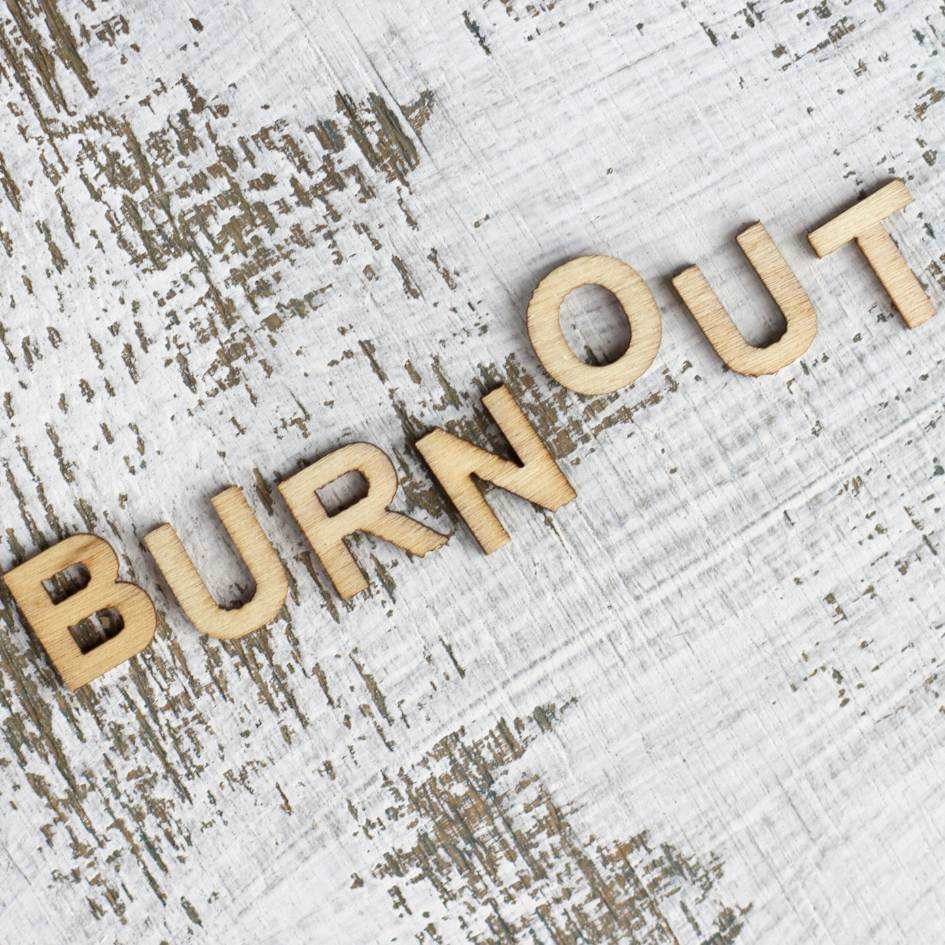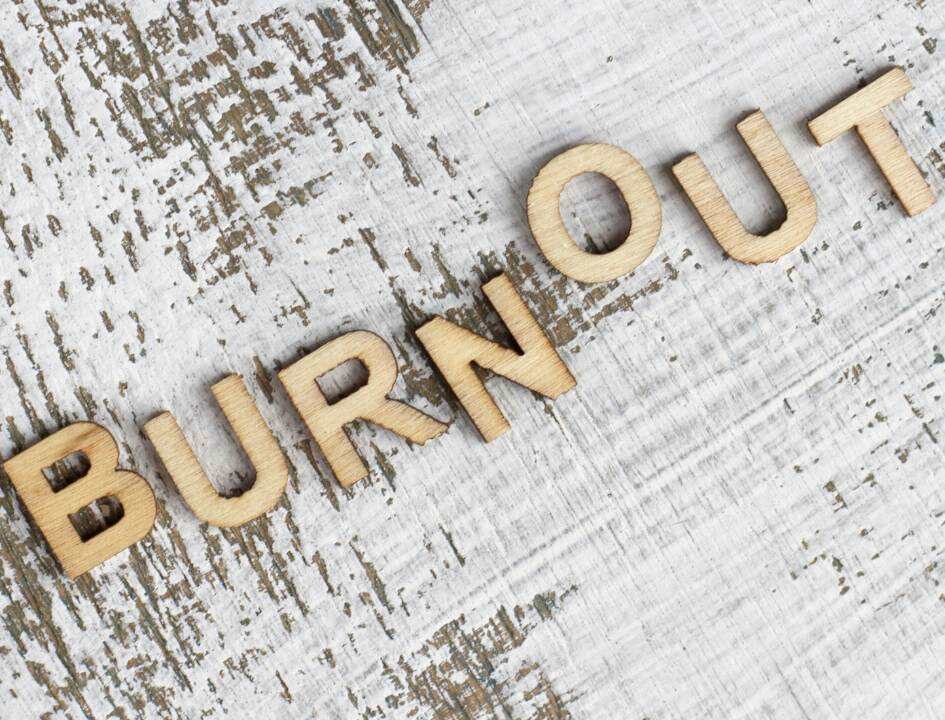
Table of contents
- Key Takeaways:
- Introduction: Burnout or Just Tired? Understanding the Difference
- Signs and Symptoms:
- Distinguishing Burnout from Stress:
- Causes and Contributors of Burnout:
- The Three R Approach:
- Tips for Preventing and Coping with Burnout:
- Conclusion: Taking Control and Recovering
- Some Facts About “Burnout or Just Tired? How to Tell the Difference”:
- FAQs
Key Takeaways:
- Recognizing the signs and symptoms of burnout is crucial in differentiating it from normal tiredness. These may include chronic fatigue, emotional exhaustion, and lack of motivation or interest in work.
- Understanding the differences between burnout and stress is important for effective management. While stress is a temporary state caused by external pressures, burnout is a prolonged state of physical and emotional exhaustion resulting from chronic stress.
- Various factors contribute to burnout, such as excessive workload, lack of control or autonomy, work-life imbalance, and lack of social support. Identifying these causes can help in addressing and preventing burnout.
- The Three R approach to dealing with burnout involves recognizing the signs, replenishing physical and emotional resources through self-care practices, and redefining priorities and boundaries. This approach allows individuals to regain control and recover from burnout.
- Preventing and coping with burnout requires implementing strategies such as setting realistic goals, maintaining a healthy work-life balance, practicing self-care, seeking support from others, and taking regular breaks to recharge and rejuvenate.
Introduction: Burnout or Just Tired? Understanding the Difference
Burnout or Just Tired? How to Differentiate the Signs
Burnout and exhaustion share similar symptoms, making it essential to distinguish between them. By understanding the subtle nuances, one can identify burnout’s presence accurately. Recognizing emotional detachment, chronic fatigue, and decreased productivity are crucial in differentiating burnout from ordinary tiredness.
Additionally, these symptoms can have a severe impact on mental and physical well-being, necessitating early intervention. A deeper understanding of burnout’s distinguishing characteristics is vital for maintaining overall well-being and preventing long-term negative consequences.
It’s noteworthy that burnout isn’t solely a consequence of excessive work or stress. Factors such as a lack of autonomy in the workplace, diminished control over work-related decisions, and a perceived lack of recognition can significantly contribute to burnout.
A study published in PubMed Central highlighted that physicians, in particular, face daily challenges in patient care, and burnout can stem from heightened stress levels in overworked professionals.
The healthcare system often requires meticulous record-keeping and administrative tasks, which can detract from the primary focus of patient care. Addressing these issues systematically, through evidence-based interventions and fostering a healthier work environment, can mitigate the effects of burnout.
Feeling burnt out? Time to figure out if you’re running on empty or just in need of a nap.
Signs and Symptoms:
Signs and Symptoms of Burnout can be identified through various indicators that indicate an individual may be experiencing physical, mental, and emotional exhaustion.
- Physical Exhaustion: Suffering from chronic fatigue, unexplained body aches, and frequent illnesses can be signs of burnout.
- Emotional Exhaustion: Feeling constantly drained, detached, and irritable, with a lack of motivation and interest in daily activities, may indicate burnout.
- Cognitive Impairment: Difficulties with memory, concentration, and decision-making can be signs of burnout, affecting professional and personal life.
- Work-related Symptoms: Experiencing a negative attitude towards work, decreased productivity, and a sense of cynicism or hopelessness may suggest burnout.
- Interpersonal Issues: Burnout can lead to strained relationships, social withdrawal, and a decreased ability to connect with others.
It is important to note that everyone’s experience with burnout may vary, and these symptoms may overlap with other conditions. Hence, accurately recognizing and addressing these signs can contribute to managing burnout effectively.
To combat burnout, individuals can consider implementing self-care routines such as prioritizing physical and mental health, setting boundaries, practicing stress-reduction techniques like mindfulness or meditation, seeking social support, and actively taking breaks and vacations. These practices help restore energy, promote relaxation, and prevent the accumulation of stress, allowing individuals to regain a healthy work-life balance.
Distinguishing Burnout from Stress:

Burnout or Just Fatigued? Differentiating the Symptoms
Determining whether you are experiencing burnout or simply feeling tired can be challenging. Burnout encompasses exhaustion, cynicism, and reduced productivity, while tiredness is a common response to physical or mental exertion. Recognizing the unique signs of burnout, such as emotional detachment and decreased motivation, can help distinguish it from temporary tiredness. Additionally, understanding the factors that contribute to burnout, such as chronic stress and lack of work-life balance, can aid in identifying the root cause of your fatigue. Be mindful of these distinctions and seek appropriate support to address your symptoms effectively.
In distinguishing burnout from stress, it is crucial to acknowledge the impact of prolonged work-related exhaustion. Burnout is not simply feeling overwhelmed or stressed; it encompasses a deeper sense of disengagement and emotional exhaustion. Identifying the unique factors contributing to burnout, such as excessive workload or a lack of control, can provide insight into the underlying causes of your fatigue. Additionally, understanding the physical and emotional manifestation of burnout, such as chronic fatigue and decreased satisfaction, can aid in differentiating it from normal tiredness. By recognizing these distinctions, you can take appropriate steps to address burnout and improve your overall well-being.
It is important to note that burnout can have severe consequences on individuals and organizations. According to a study published in the Journal of General Internal Medicine, burnout is associated with higher healthcare costs and lower patient satisfaction among healthcare professionals. This highlights the urgency in effectively recognizing and addressing burnout to prevent its negative impact on both personal and professional lives.
Distinguishing burnout from stress is like telling the difference between a broken pencil and a broken spirit – both leave you feeling empty, but only one requires a trip to the store for a replacement.
Causes and Contributors of Burnout:
The factors leading to burnout are numerous and varied. Stress, excessive workload, lack of control or support, and poor work-life balance are some of the primary causes and contributors of burnout. These factors can all contribute to feelings of exhaustion, cynicism, and reduced effectiveness in the workplace. Additional factors such as organizational culture, conflict, and lack of recognition may also contribute to burnout. It is important to be aware of these factors and take steps to address them in order to prevent burnout and promote well-being.
The Three R Approach:
The Three R Approach to Dealing with Burnout:
Recognize the Signs: Identify the symptoms of burnout, such as chronic fatigue, decreased motivation, and feelings of cynicism. Acknowledge the presence of burnout and its impact on your overall well-being.
Replenish Your Resources: Take steps to replenish your physical, emotional, and mental resources. Engage in activities that bring you joy and relaxation, practice self-care, and seek support from loved ones or professional resources.
Reevaluate and Realign: Reflect on your priorities and values, and reevaluate your current situation. Make necessary adjustments and realign your goals and expectations to create a healthier and more sustainable work-life balance.
Covering unique details: It is crucial to pay attention to early warning signs of burnout, such as irritability and decreased productivity. Implementing self-care strategies and seeking professional help are vital in preventing and managing burnout effectively.
True History: The Three R Approach to Dealing with Burnout has gained popularity due to its practicality and effectiveness in addressing burnout. Many individuals have successfully used this approach to restore their well-being and find renewed motivation in their personal and professional lives.
Tips for Preventing and Coping with Burnout:
Burnout or Just Fatigued? Distinguishing Between the Two
Identifying whether you are experiencing burnout or simply feeling tired can be challenging. However, there are key differences to help distinguish between the two. Burnout is characterized by chronic exhaustion and a sense of cynicism or detachment toward work, while tiredness is a temporary feeling of physical or mental exhaustion. To differentiate, consider the duration and intensity of your symptoms, as well as their impact on your work performance and overall well-being.
When distinguishing burnout from tiredness, it is essential to consider the underlying causes. Burnout often arises from chronic workplace stress, excessive workloads, and a lack of control over one’s job responsibilities. On the other hand, feeling tired can stem from physical exertion, lack of sleep, or temporary stressors. Assessing the root causes can help pinpoint whether burnout or temporary fatigue is the primary issue.
Furthermore, recognizing the symptoms of burnout is crucial. These may include constant fatigue, decreased productivity, feelings of negativity or cynicism, and a lack of enthusiasm. In contrast, tiredness is often characterized by physical exhaustion, difficulty concentrating, and a temporary decline in performance. Understanding these distinctions can help guide you towards appropriate actions and interventions.
To prevent and manage burnout, developing effective coping strategies is essential. Prioritize self-care and practice stress management techniques such as exercise, relaxation exercises, and maintaining a healthy work-life balance. Seek social support and consider talking to a therapist or counselor if needed. Implementing these habits can help prevent burnout and foster overall well-being.
According to a study published in the Journal of Occupational Health Psychology, individuals who engage in regular physical activity are less likely to experience burnout. Incorporating exercise into your routine can have significant positive effects on your mental and emotional well-being, ultimately reducing the risk of burnout.
Don’t hesitate to contact our expert personal trainers who are here to guide and assist you throughout your recovery journey.
Remember, it is vital to understanding the factors that contribute to burnout and implementing effective coping strategies, you can prioritize your well-being and maintain a healthy work-life balance.
Conclusion: Taking Control and Recovering

Recovering from Burnout and Regaining Control
Burnout is a state of extreme exhaustion caused by prolonged stress. To recover, it is essential to take control of your well-being. Implementing self-care strategies, setting boundaries, and seeking support can help in the healing process. Identifying burnout triggers and making necessary adjustments in your personal and professional life are key. Remember, your mental and physical health should be prioritized to prevent burnout from resurfacing. Take the necessary steps, seek help, and regain control of your life.
Some Facts About “Burnout or Just Tired? How to Tell the Difference”:
- ✅ Burnout is a state of emotional, physical, and mental exhaustion caused by excessive and prolonged stress.
- ✅ It occurs when you feel overwhelmed, emotionally drained, and unable to meet constant demands.
- ✅ Burnout reduces productivity and saps your energy, leaving you feeling increasingly helpless, hopeless, cynical, and resentful.
- ✅ Burnout can cause long-term changes to your body that make you vulnerable to illnesses like colds and flu.
- ✅ Dealing with burnout requires recognizing the warning signs, seeking support, and taking care of your physical and emotional health.
FAQs
What is burnout and how does it differ from feeling tired?
Burnout is a state of emotional, physical, and mental exhaustion caused by excessive and prolonged stress, while feeling tired is simply a temporary state of fatigue. Burnout is characterized by feelings of helplessness, cynicism, and resentment, and it can reduce productivity and saps your energy. On the other hand, feeling tired is a normal response to physical or mental exertion, and it can be resolved with rest and relaxation.
What are the signs and symptoms of burnout?
The signs and symptoms of burnout can vary, but they often include feeling overwhelmed, emotionally drained, and unable to meet constant demands. You may also experience a loss of interest and motivation, and begin to feel helpless, hopeless, cynical, and resentful. Burnout can also cause physical symptoms such as fatigue, headaches, and changes in appetite and sleep patterns.
How can I prevent or manage burnout?
To prevent or manage burnout, it is important to recognize the warning signs and take steps to reduce stress. This may include seeking support from friends, family, or a professional counselor, as well as practicing self-care techniques such as exercise, relaxation techniques, and setting boundaries. Building resilience to stress by taking care of your physical and emotional health is also essential.
What role does social support play in preventing burnout?
Social support is crucial in preventing burnout. Talking face to face with a good listener can help calm your nervous system and relieve stress. Reach out to those closest to you, such as your partner, family, and friends, and don’t be afraid to confide in them. Developing friendships with coworkers can also help buffer you from job burnout. Limiting contact with negative people can also have a positive impact on your mental well-being.
How can I tell if I am experiencing burnout or just feeling overwhelmed?
While feeling overwhelmed is a normal response to stress, burnout is characterized by a sense of emotional, physical, and mental exhaustion that affects all areas of your life. If you find yourself consistently feeling helpless, cynical, and resentful, and you have lost interest and motivation in the things you once enjoyed, you may be experiencing burnout. It is important to recognize the signs and take steps to address burnout before it becomes more severe.
When should I seek professional help?
If you have tried to manage burnout on your own and are still experiencing significant distress and impairment in your daily functioning, it may be beneficial to seek professional help. A mental health professional can provide guidance and support tailored to your specific needs. They can help you develop coping strategies, identify underlying factors contributing to burnout, and provide resources to help you regain your energy, optimism, and hope.
If you found this article helpful, you might also enjoy reading our other pieces on strategies for a healthier work-life balance, understanding the symptoms of depression and its treatment, and effective ways to reduce stress. Dive in for more insights!

